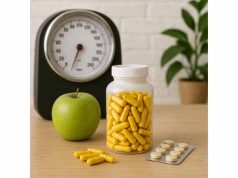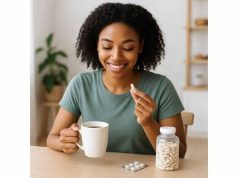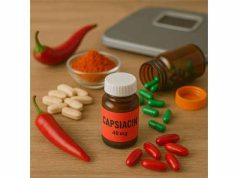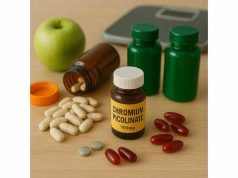
Green coffee bean extract (GCBE) promises a leaner body from an everyday plant. The pitch is simple: unroasted beans retain chlorogenic acids that supposedly curb carbohydrate absorption, steady blood sugar, and nudge fat loss—without changing much else. After years of hype, what remains? Modest mechanisms, small or inconsistent results, and large gaps in product quality. This guide separates marketing from measurable effects, explains how GCBE might work, and shows how to test it safely if you choose. If you are comparing supplements with prescription options or structured programs, review our plain-English overview of clinically supported options for weight management before you decide where to invest time and money.
Table of Contents
- What is green coffee bean extract?
- How might it work for weight loss?
- Dose, forms, and what to buy
- Common mistakes and troubleshooting
- Safety, side effects, and who should avoid
- Who benefits and who does not
- What the evidence says
- Frequently Asked Questions
What is green coffee bean extract?
Green coffee beans are simply unroasted coffee beans. Roasting drives off many chlorogenic acids (CGAs), the polyphenols that give GCBE its theoretical edge. Supplement makers concentrate CGAs into capsules or powders, often advertising a percentage standardization (commonly “45–50% CGA”) and sometimes noting “decaffeinated.”
What GCBE is—and is not
- It is a concentrated polyphenol extract. CGAs include compounds that can influence carbohydrate handling and the gut environment.
- It is not magic. Most products provide small to moderate amounts of CGAs plus variable caffeine. Effects depend on dose, timing, and your overall diet and activity.
Why it became popular
Early, small studies and dramatic marketing promised noticeable fat loss without significant lifestyle changes. As better-designed trials arrived, average effects looked smaller, and inconsistent product quality muddied the picture. GCBE can still be tested safely by informed, motivated users—but realistic expectations are essential.
How it compares to everyday coffee
- Caffeine content: GCBE supplements may be decaffeinated or naturally low in caffeine, but labels vary. Brewed coffee’s appetite effects come mainly from caffeine and volume; GCBE targets CGAs.
- Taste and tolerance: Because it is encapsulated, GCBE avoids coffee’s acidity and flavor—useful if you dislike coffee or limit caffeine.
Where GCBE fits in a plan
If your goal is sustainable fat loss, GCBE—at best—adds a small edge when paired with fundamentals:
- A modest calorie deficit (roughly 300–500 calories/day).
- Protein at each meal (often 1.6–2.2 g/kg/day, personalized with your clinician).
- Resistance training two to four days weekly and daily steps.
- Adequate sleep to stabilize appetite and decision-making.
Need a refresher on those pillars? See our concise guide to safe weight loss fundamentals before trying any supplement. GCBE cannot compensate for large liquid calories, frequent restaurant meals, or chronic sleep debt.
Bottom line so far: GCBE is a plausible adjunct with small average effects. Treat it as optional support, not a centerpiece.
How might it work for weight loss?
Marketers highlight three main mechanisms. Understanding them helps you predict what GCBE can—and cannot—do.
1) Carbohydrate handling and absorption
CGAs may inhibit intestinal enzymes that break down complex carbohydrates, slightly slowing glucose absorption. In meals with refined starches, that could blunt sharp glucose rises and subsequent “rebound hunger.” The effect is modest and dose-dependent. It does not “block carbs” outright, and whole-meal composition matters more than a capsule.
2) Glucose and insulin dynamics
By smoothing post-meal spikes, CGAs may reduce the roller-coaster that drives cravings in some people. The practical outcome is more stable energy across the afternoon and fewer impulsive snacks. This is easiest to notice if you already structure meals and keep protein steady.
3) Caffeine’s assist (if present)
Some GCBE products contain caffeine, which can briefly raise energy expenditure and suppress appetite. Whether that helps depends on your overall caffeine intake and tolerance. If stimulants push into the afternoon, sleep can suffer and appetite control worsens the next day. For timing and safe intake ranges, review our guide to caffeine dosing and safety.
Why the mechanism does not guarantee results
- Dose reality: Many labels quote “extract milligrams,” not actual CGA milligrams. Two products with the same capsule size can deliver very different active amounts.
- Adaptation: Appetite and gut microbiome responses adapt over time. Initial changes may fade without consistent diet structure.
- Context matters: A protein-forward, fiber-rich meal plan will amplify any small CGA effect; a grazing pattern of ultra-processed snacks will drown it out.
What you might notice if you respond
- Slightly smaller portions at starch-heavy meals.
- Fewer “crash and snack” episodes in the late afternoon.
- A subtle preference for balanced meals over sweets when protein is adequate.
GCBE’s best-case scenario is support, not transformation. Think “gentle nudge” rather than “metabolic switch.”
Dose, forms, and what to buy
Choosing a product intelligently is half the battle. Use this checklist to make a fair trial possible.
1) Look for true CGA content, not just extract weight
A label might say “800 mg green coffee extract (50% CGA).” That equals 400 mg CGA—the number that matters. Products listing only “extract milligrams” without a percentage leave you guessing.
2) Standardization and decaf status
- Standardized CGA (e.g., 45–50%) indicates consistent polyphenol content batch to batch.
- Decaffeinated can help if you are caffeine-sensitive or dose later in the day. If not decaf, count the caffeine toward your daily total.
3) Typical starting and target doses
- Start: ~200–300 mg CGA once daily, 15–30 minutes before a starch-heavy meal.
- If tolerated: Increase to 400–600 mg CGA/day split before 1–2 meals.
- Upper range used in studies: Some protocols reach ~800–1,000 mg CGA/day short term. Higher doses raise the risk of GI upset; more is not always better.
4) Timing and pairing
- Take before meals where you struggle with portions or post-meal energy dips.
- Pair with protein and fiber at the meal; that combination steadies appetite better than any capsule alone.
- Avoid right before intense workouts to prevent heavy fullness.
5) Capsules vs. powders
- Capsules: Convenient and pre-measured.
- Powders: Easier to titrate but watch for added sweeteners; mix in water and drink promptly.
6) Quality signals
- Clear CGA milligrams per serving and decaf status.
- Batch testing or third-party certification.
- Simple ingredient lists without stimulant stacks or “proprietary blends.”
7) Duration of a fair trial
- Two to four weeks at a consistent, tolerable dose is enough to judge appetite and portion changes. If nothing shifts, stop. Do not chase results by escalating doses.
For help decoding claims and serving math, use our quick primer on how to read supplement labels so you can verify real active amounts before you buy.
Common mistakes and troubleshooting
Small add-ons only work when the basics are in place. Avoid these pitfalls to give GCBE a fair shot.
Mistake 1: Expecting fast, dramatic fat loss
Early marketing promised weekly drops without changing your routine. In reality, best-case changes are subtle and accumulate slowly. Measure progress by fewer snack episodes, steadier energy, and consistent weekly trends—not day-to-day scale noise.
Mistake 2: Confusing extract with brewed coffee
A supplement’s CGA content does not equal a cup of coffee. Coffee’s appetite effects mostly come from caffeine and beverage volume. GCBE targets CGAs with less or no caffeine. Count any caffeine on the label toward your daily total to protect sleep.
Mistake 3: Ignoring meal composition
A capsule before a calorie-dense, low-protein meal cannot overcome energy balance. Pair GCBE with protein (e.g., chicken, tofu, Greek yogurt) and vegetables or whole grains. That structure turns a minor biochemical effect into meaningful satiety.
Mistake 4: Stacking stimulants
Some “fat burner” blends add GCBE to caffeine, synephrine, yohimbine, or other stimulants. Side-effects rise faster than benefits. If you are tempted by stacks, read our overview of stimulant-heavy fat burners before you risk sleep and heart health.
Mistake 5: Overdosing and upsetting your gut
Jumping to high doses invites nausea, cramping, or loose stools—especially on an empty stomach. Step up gradually, take before meals, and stop if symptoms outweigh benefits.
Mistake 6: Chasing the wrong metric
If appetite is steadier but the scale does not budge, audit liquid calories, restaurant portions, and weekends. A few drinks or shared appetizers can erase a week’s calorie deficit.
A quick troubleshooting flow
- No appetite change after 10–14 days? Stop. GCBE probably is not your lever.
- Mild benefit with nausea? Reduce dose and move earlier before meals.
- Energy dips late afternoon? Place one dose before lunch and add a protein-plus-fiber snack.
- Sleep worsens? Switch to decaf GCBE or limit total daily caffeine.
Safety, side effects, and who should avoid
GCBE is generally well tolerated, especially in decaf form, but “generally” is not “universally.” Treat it like any active compound: start low, monitor, and stop if issues arise.
Common side effects
- Nausea or stomach discomfort—more likely at high doses or on an empty stomach.
- Loose stools or, less often, constipation.
- Jitteriness or sleep disruption if the product contains caffeine.
Less common concerns
- Headaches or reflux when dosing near bedtime.
- Interactions with medications that rely on precise timing of absorption (e.g., certain thyroid or diabetes drugs); take GCBE at a different time of day if advised by your clinician.
- Rare reports of liver injury have been associated mainly with multi-ingredient weight-loss products. Choose single-ingredient GCBE from reputable brands, monitor how you feel, and stop if you develop concerning symptoms (fatigue, dark urine, abdominal pain, yellowing skin/eyes).
Who should avoid or get medical guidance first
- Pregnant or breastfeeding individuals. Safety data are limited; avoid.
- People with significant anxiety, insomnia, or uncontrolled hypertension. Choose decaf if you proceed at all, and verify total daily caffeine from all sources.
- Those with diabetes using medications that lower blood sugar. Appetite changes can affect dosage needs; involve your clinician.
- Anyone with known liver disease or unexplained abnormal liver tests. Avoid unless your care team approves and monitors.
Drug and supplement interactions
- Review your full list with a clinician or pharmacist.
- Separate GCBE from sensitive oral medications when advised.
- Avoid stacking with stimulant “fat burner” products.
Quality matters
Independent verification reduces contamination and mislabeling risk. Prefer brands that share certificates of analysis or recognized certifications; learn how to evaluate seals and batch testing in our guide to third-party testing.
Who benefits and who does not
More likely to benefit
- Caffeine-naïve or low-caffeine users who choose decaf GCBE and already run a structured meal plan.
- People with afternoon crashes after starch-forward lunches; a pre-lunch dose may steady energy and reduce vending-machine detours.
- Routine-oriented users who like simple add-ons and will stop quickly if no benefit appears.
Less likely to benefit
- High-caffeine users already drinking multiple coffees or energy drinks; any small GCBE effect gets lost in the noise.
- Chaotic routines with frequent grazing or alcohol; environment overwhelms subtle biochemical nudges.
- Those expecting dramatic weekly changes without adjusting diet quality, protein, and sleep.
What to try instead
- Soluble fiber before meals for predictable fullness (e.g., psyllium 15–30 minutes before your hungriest meal). See a practical comparison in our overview of fiber timing.
- Protein anchors at breakfast and lunch to flatten afternoon cravings.
- Resistance training 2–4 times per week to preserve muscle and metabolic rate.
Decision rule
If GCBE does not reduce snack frequency, portion size, or “food noise” within two weeks at a tolerable dose, stop and reallocate effort to habits with larger returns.
What the evidence says
Early promise, later perspective
Small, short trials and dramatic case studies sparked initial enthusiasm. Some reported extra pounds lost over a few weeks, usually in calorie-restricted settings. As trials grew larger and methods improved, average differences between GCBE and placebo shrunk or disappeared. A widely publicized early study was later withdrawn, reinforcing skepticism.
Magnitude you can reasonably expect
- In the best-case responders, GCBE may help trim tens to a few hundred calories per week by smoothing post-meal hunger and dialing down cravings.
- Across mixed users, average effects on the scale are small—measurable for some, negligible for many—unless paired with structured nutrition and activity.
What drives variability
- True CGA dose vs. labeled extract weight.
- Presence or absence of caffeine, and your personal tolerance.
- Meal structure and protein intake (strong multipliers of any small effect).
- Sleep and stress, which heavily influence appetite hormones and decision-making.
- Consistency over months, not days.
Practical takeaway
If you value low-risk experiments and already have your base habits in place, GCBE is reasonable to test briefly. If you want the highest probability of visible change per dollar and effort, prioritize food structure, protein, fiber, and resistance training—and consider clinician-guided therapies when appropriate.
Frequently Asked Questions
Does green coffee bean extract actually help with weight loss?
It may help a subset of people eat a little less by smoothing post-meal glucose and reducing cravings, but average effects are small. You will get the most from GCBE only when you pair it with structured meals, adequate protein, fiber, and consistent activity.
How much green coffee bean extract should I take?
A common trial is 200–300 mg chlorogenic acids once daily for a week, then 400–600 mg/day split before 1–2 meals if well tolerated. Stop if you see no appetite or portion change after two weeks. Higher doses raise the risk of stomach upset without guaranteeing better results.
Is decaffeinated GCBE better?
Decaf GCBE avoids stimulant-related sleep and anxiety issues while preserving CGAs. If you already consume caffeine from coffee or tea, decaf helps protect sleep. If your product contains caffeine, count it toward your daily total and avoid dosing late in the day.
Are there side effects I should watch for?
Most side effects are gastrointestinal—nausea, cramping, or loose stools—especially at higher doses or on an empty stomach. Rarely, multi-ingredient weight-loss products have been linked to liver injury. Choose reputable single-ingredient GCBE and stop if you notice concerning symptoms.
Can I take GCBE with diabetes medications?
Possibly, but involve your clinician first. Appetite changes and smoother post-meal glucose can affect medication needs and timing. Monitor blood sugars closely when starting or adjusting doses, and separate GCBE from sensitive oral drugs if your clinician advises it.
Is brewed coffee a substitute for GCBE?
Not exactly. Brewed coffee’s effects come mostly from caffeine and beverage volume; CGA content is lower than many supplements. Coffee can support alertness and workouts, but it is not equivalent to a standardized CGA dose. Choose based on your goals and caffeine tolerance.
References
- Chlorogenic acid in green bean coffee on body weight: a systematic review and meta-analysis of randomized controlled trials 2023 (Systematic Review)
- The effect of green coffee extract supplementation on anthropometric measures in adults: A comprehensive systematic review and dose-response meta-analysis of randomized clinical trials 2020 (Systematic Review)
- Effects of green coffee aqueous extract supplementation on glycemic indices, lipid profile, CRP, and malondialdehyde in patients with type 2 diabetes: a randomized, double-blind, placebo-controlled trial 2023 (RCT)
- Herbal and Dietary Supplements – LiverTox – NCBI Bookshelf 2025 (Safety Review)
- Dietary Supplements for Weight Management: A Narrative Review of Safety and Metabolic Health Benefits 2022 (Narrative Review)
Disclaimer
This article provides general information and is not a substitute for personalized medical advice, diagnosis, or treatment. Always consult a qualified healthcare professional before starting or changing supplements, especially if you take prescription medications, are pregnant or breastfeeding, or have chronic medical conditions.
Share and follow
If this guide helped you separate green coffee bean myths from the evidence, consider sharing it with someone comparing supplement claims. For practical, evidence-based updates, follow us on the social platform you use most—Facebook, X, or another network you prefer. Your questions and feedback are welcome.










